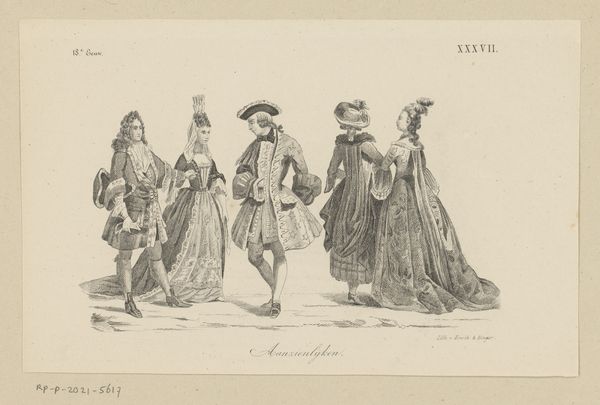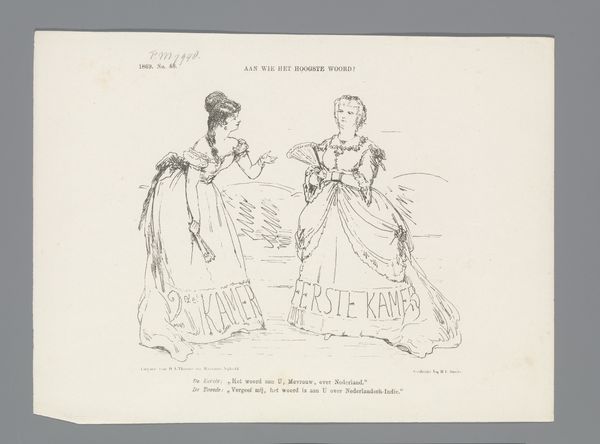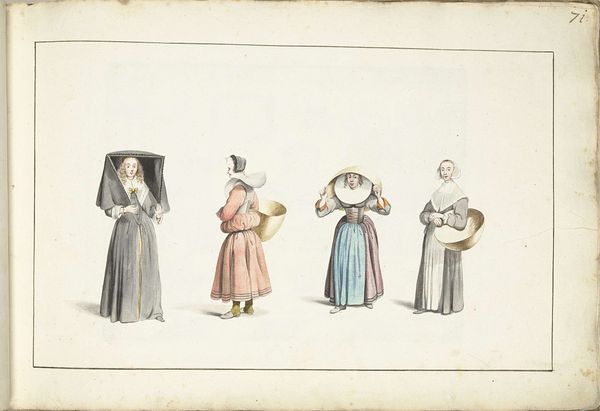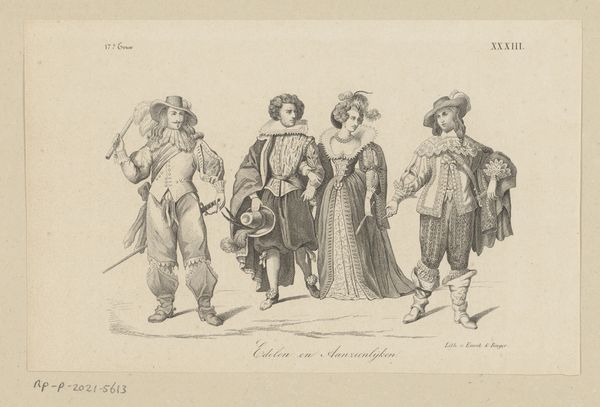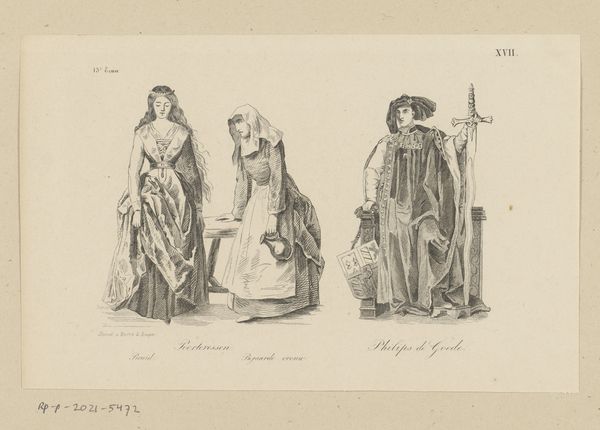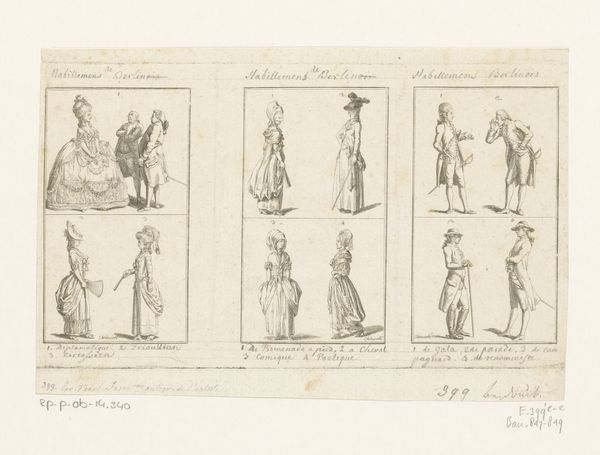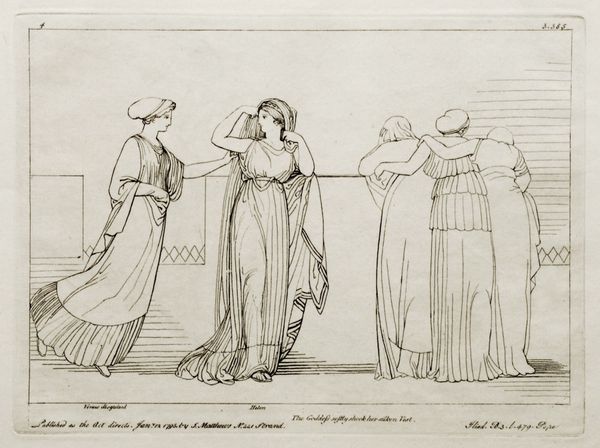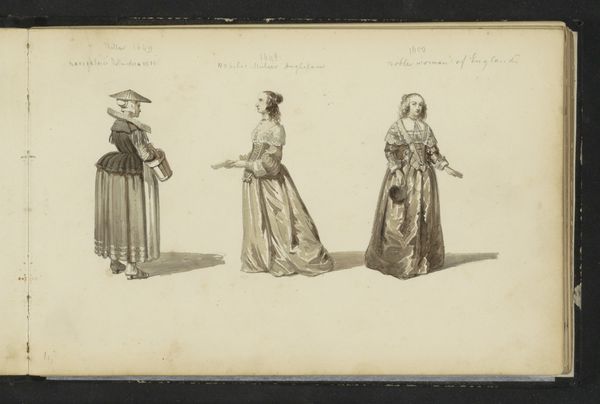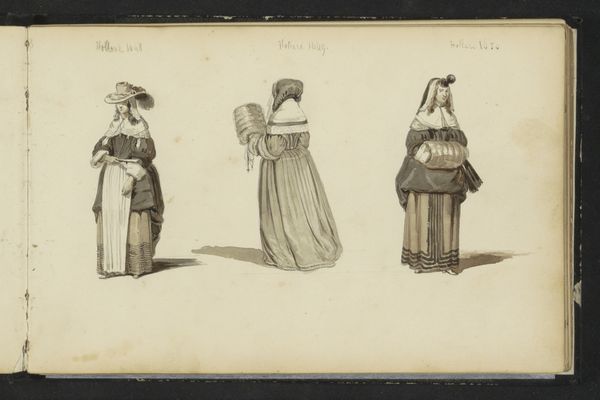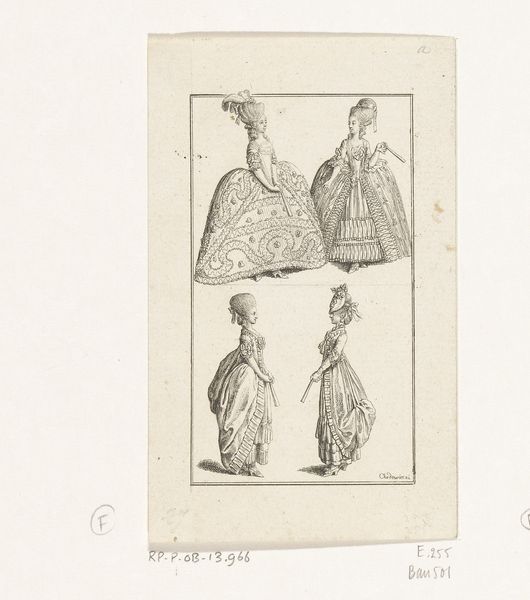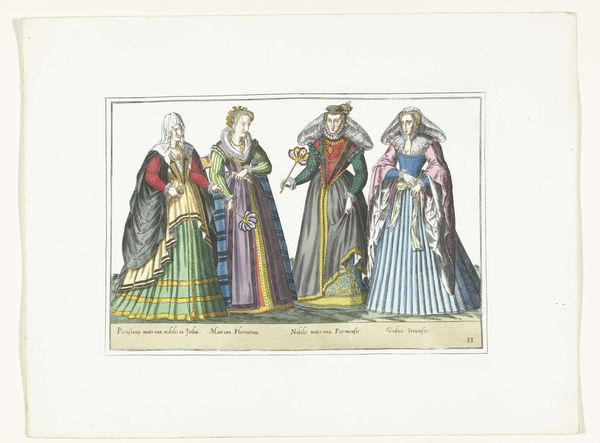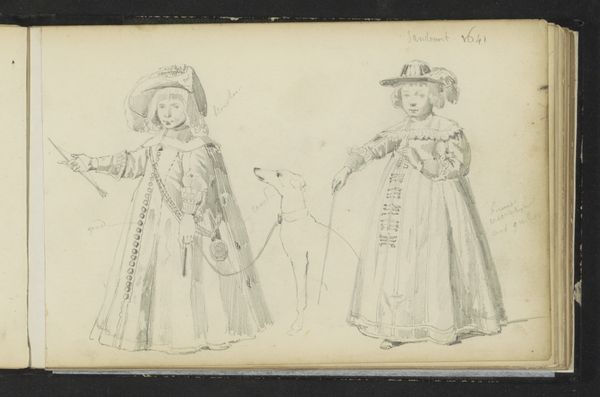
drawing, pen
#
portrait
#
drawing
#
costume
#
pen
#
genre-painting
#
history-painting
#
realism
Dimensions: height 150 mm, width 236 mm
Copyright: Rijks Museum: Open Domain
Curator: Here we have an 1857 drawing currently held in the Rijksmuseum, it is an example of a history painting, even a genre painting. The piece presents, “Twee edelvrouwen en twee burgers in kleding uit de zestiende eeuw.” Editor: It is interesting how the artist chose to only use a pen for this artwork, there are a lot of linear details that define each character's status. Also, it strikes me that these aren't presented as portraits of specific people but, rather, as costume studies. Curator: Exactly! We can decode these figures by meticulously observing their sartorial semiotics. Consider how each ruffle, fold, and embellishment signals specific social roles. The composition cleverly juxtaposes the elaborate gowns of the noblewomen with the more restrained attire of the bourgeois citizens. Editor: Speaking of composition, note how the choice of using a pen emphasizes line and form over color and texture. But it really brings up the question of labor and material access, or who had access to these kinds of fine garments? Are we idealizing the elites, or are we just trying to represent all of the groups with these carefully chosen materials that symbolize wealth, taste, and position? Curator: While the social implications are fascinating, the penwork also emphasizes the linear quality which enhances the aesthetic effect. Look closely at the way the light plays across the surfaces; there is also depth. This allows the garments themselves to emerge as protagonists within the picture plane. Editor: True, and if we reflect on the context around pen drawings as a common medium in the nineteenth century, it makes me wonder how people made and consumed the images circulating then versus today. How does mass production and social class tie into our relationship with what we view as fine art? Curator: Those questions, indeed, force us to acknowledge the intersections that the piece presents between past material and current appreciation. The drawing reminds us that an artwork exists both as an aesthetic object and a historical document. Editor: And considering those ideas, reflecting on the historical role and context that art serves adds even more meaning to the craftsmanship we have been exploring. Thanks to it we can analyze materials and forms through diverse lenses.
Comments
No comments
Be the first to comment and join the conversation on the ultimate creative platform.
